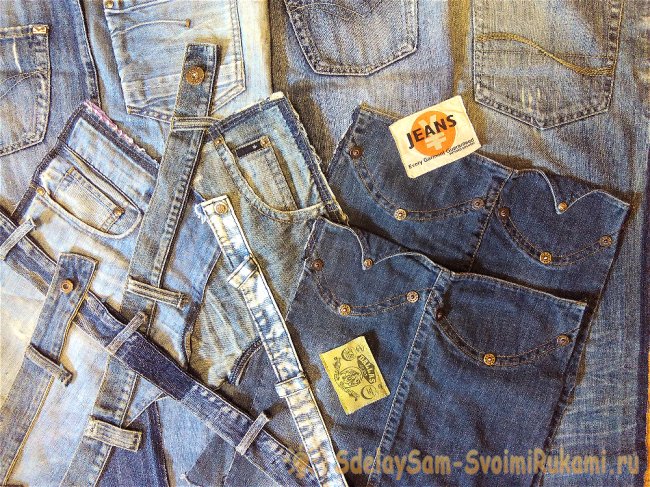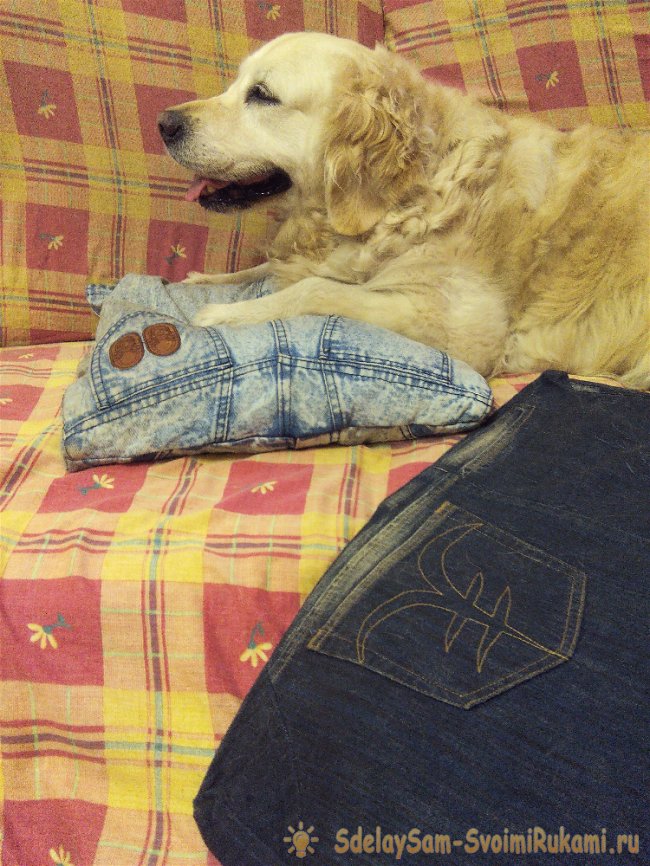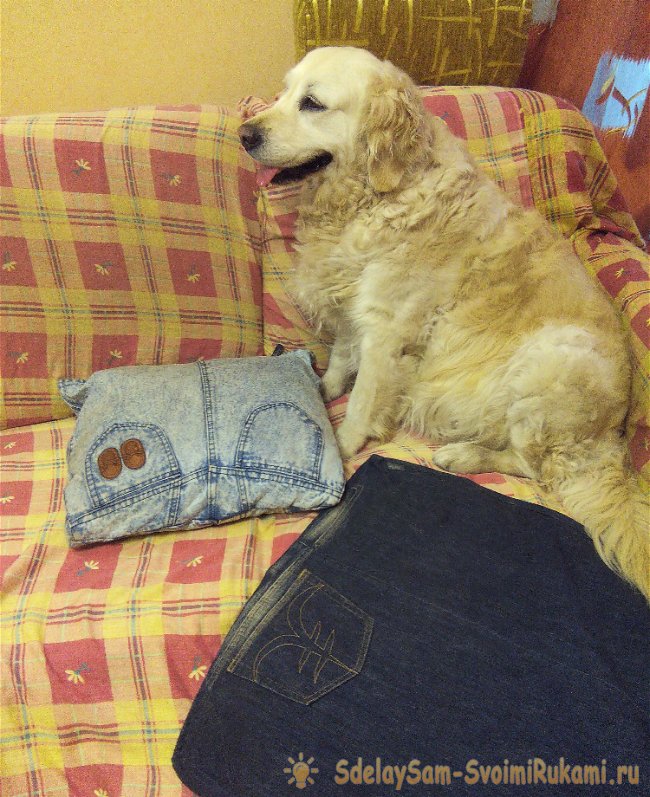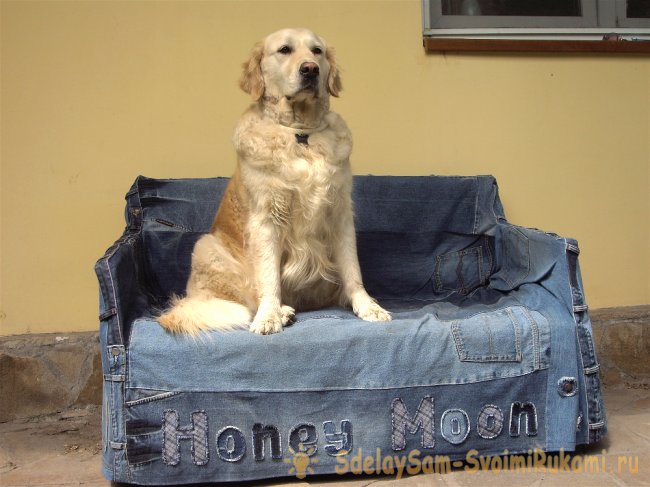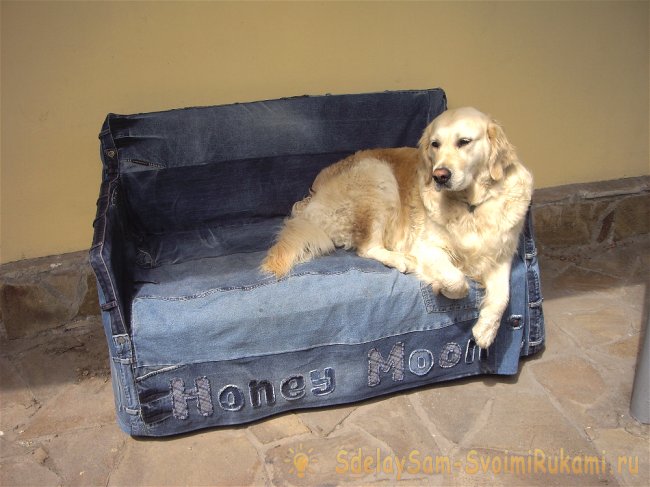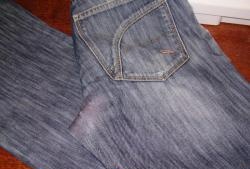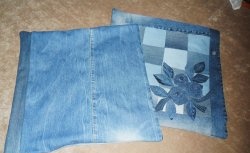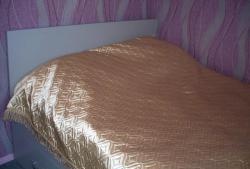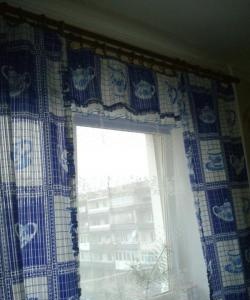Nowadays, everyone wears jeans - from grandparents to grandchildren and very young children. We bought it, wore it, then the trousers frayed (usually “in one step”) - we buy new ones. The most beautiful part of the jeans remains practically new. Raised seams, high-quality stitching, eye-catching pockets often with embroidery, cute rivets, straps, labels - the cream of the crop of design and tailoring skills. Well, it’s a shame to throw it away!
On the other hand, denim is not the lightest material for handmade work. The fabric is quite heavy and dense, requiring both suitable (preferably special) threads and a reliable sewing machine. Ripping jeans is also not “sugar”: they are, as a rule, stitched tightly and conscientiously - even if you gnaw them with your teeth. While you are preparing the fabric for further work, you will suffer. Therefore, the most common proposal for alteration is to build a skirt, adding an interesting hem and leaving the upper part unchanged (belt, yoke, and as much lower as needed). But the fabric is wonderful! Beautiful, strong, washes well and does not lose its effectiveness with age. And there is a lot of it, which turned out to be very important for my idea.
The fact is that we have a dog - a golden retriever of indescribable beauty and affection. And this dog has his own property: rugs and bedding. All this equipment should be washed and dried regularly, but it dries poorly and takes a long time, because it is thick (multi-layered). Eureka! – you need to build covers, a pair for each rug. Made from heavy fabric (so it doesn’t fidget) and durable (so it lasts a long time). And jeans are not just suitable material for this, but ideal.
All assembled jeans were washed and ripped. The ripping process was significantly simplified. Most modern models are stitched using the “sliding loop” method, and you just need to find the right edge to pull out the entire thread at once. If there is also stitching, then, of course, it’s done the old fashioned way - scissors, blade, etc.
For my project, we only rip out the waistband, crotch seam (zipper too, of course) and the inseam. After this, we lay out the resulting halves and carefully observe how the outer (side) seam lies on a flat surface. In men's jeans, it is almost even and does not “excite”. This means that this part can be used without changes. If the jeans had a complex cut, then we also rip out the side seams.
We are separately solving the issue with rivets. Small and flat ones can be left, but large and embossed ones should be removed. The holes from them remain small, almost invisible. It is more convenient to remove (bite) with side cutters (nippers) or small pliers - this also works well.
The next stage of preparation is to sew up the pockets, i.e. Simply stitch the top of the pocket close to the edge and secure the ends of the seams. Then we move on to working with holes and severe abrasions, especially around the knees.The most reliable way is to apply decorative patches (with or without fringe), and the fastest way is to sew a pocket in this place. Just cut it close to the seam from the unwanted part of the jeans and sew it over the hole.
It is more convenient to apply decorative patches in a tight zigzag pattern at a distance of 0.5-0.8 cm from the edge, and then make a fringe by pulling out the threads. Such patches can take any form. You can even make a whole pattern out of them. Another convenience is that in case of a new hole, you can sew on the same patch without disturbing the overall style. My favorite “dog” trousers for walking in the woods already have a whole collection of the most “various denim” patches.
Prepared pieces of jeans can be assembled into a finished item using a pattern or “by eye” - depending on the complexity of the cut. A cover for a sofa cushion or for a small mattress is made from a assembled rectangular strip. Dimensions are checked during assembly and taking into account seam allowances. If necessary, a zipper is sewn in, but it can also be done without a fastener, using the “envelope” principle as on traditional pillowcases. Items that are complex in cut and large in area require more time and effort.
The real test for me was the cover for the outdoor sofa where my dog spends most of the summer. The frame of the sofa was made from two old armchairs from Soviet times. First, they removed all the upholstery from them, then unscrewed two side panels (one chair had the right one, the other had the left one). We moved the chairs to the sides without sidewalls and tightened it with our own bolts through the existing factory holes. A cotton blanket was stuffed onto the seats and back using a furniture stapler. Before they had time to take the tools to the garage and sweep, the dog was already lying on the new platform. This means you liked the sofa and need to hurry up with the cover.
The pattern for the cover was made only along the sides, because the central part is just a very large rectangle. It took six pairs of jeans for everything. A very successful detail is the belts sewn along the outer contour. They managed to preserve both the straps and even the stud buttons. On one of the sidewalls on the outside there is a “working” pocket left unstitched for decoration. The letters along the hem of the sofa spell out my dog's name. They were specially made from different types of fabric in order to maintain the style: all are denim, but all are different, there are even checkered ones.
The cover has been living safely in the yard for several years now. It cannot be removed for the winter because the sofa is under a canopy, protected from rain and snow. Having convinced myself of its reliability and convenience, I plan to make denim covers for the garden cushions. furniture. And I will have both a yard and a house - “jeansier than all jeans”!
We sew a sofa cover from jeans
Similar master classes
Particularly interesting
Comments (0)
